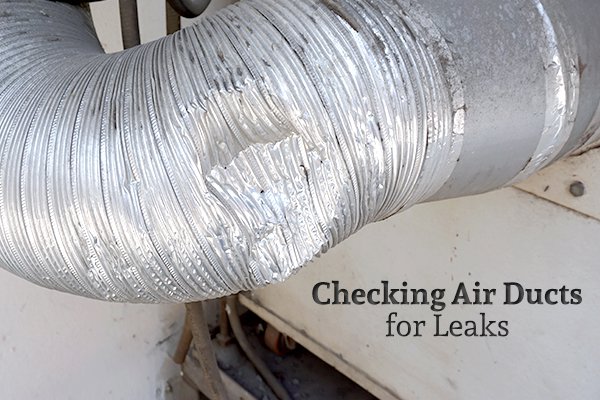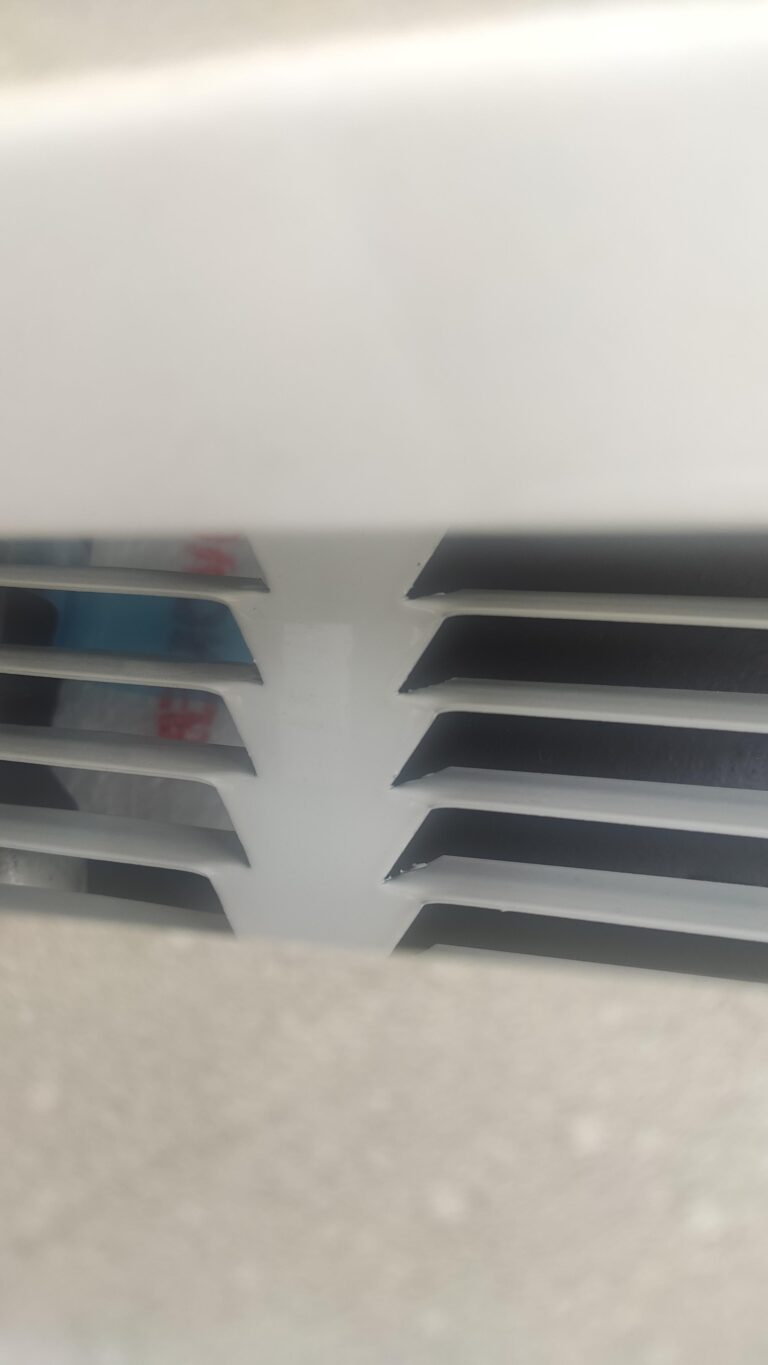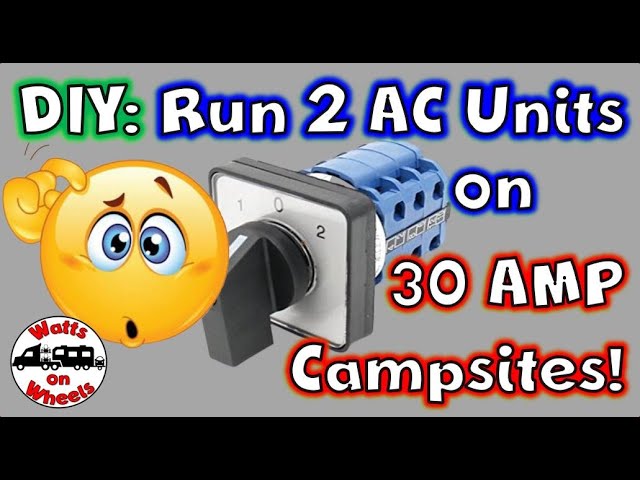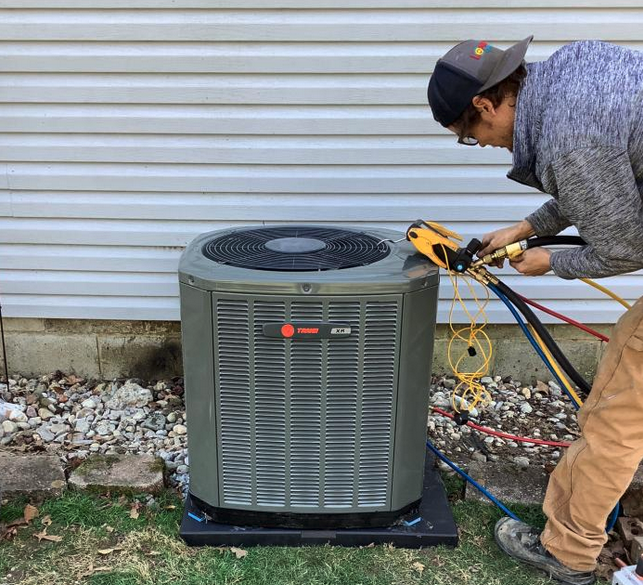How Can I Test My Air Conditioning Ducts For Leaks Easily?
To test your air conditioning ducts for leaks, perform a visual inspection and use a smoke pencil or incense stick. Seal any visible gaps with mastic sealant or foil tape.
Air conditioning duct leaks can cause inefficiencies and higher energy bills. Identifying and sealing these leaks ensures optimal performance and comfort. Start with a thorough visual inspection of all accessible ductwork. Check for any visible gaps, cracks, or disconnected sections.
Using a smoke pencil or incense stick helps detect smaller, less obvious leaks. Hold it near suspected areas and watch for smoke movement indicating air escaping. Once identified, seal the leaks with mastic sealant or foil tape. Regular maintenance of your ductwork can improve air quality and reduce energy costs.

Credit: basc.pnnl.gov
Importance Of Duct Integrity
Air conditioning ducts are the veins of your HVAC system. They transport cool air to every room. Duct integrity means no leaks or blockages. This ensures your system runs efficiently. Leaky ducts can cause many problems. They waste energy and reduce air quality. Testing duct integrity is crucial.
Energy Efficiency
Leaky ducts cause your system to work harder. This increases energy use. It also raises your electricity bills. When ducts are sealed, cool air reaches its destination. This keeps your home comfortable. It also saves energy.
| Leaky Ducts | Sealed Ducts |
|---|---|
| High energy bills | Lower energy bills |
| Overworked AC unit | Efficient AC unit |
| Uneven cooling | Even cooling |
Indoor Air Quality
Indoor air quality is vital for health. Leaky ducts let in dust and pollutants. This can cause allergies and respiratory issues. Sealed ducts keep your air clean. They prevent harmful particles from entering. Clean air means a healthier home.
- Reduces dust and allergens
- Prevents mold growth
- Improves overall air quality
Signs Of Leaky Ducts
Understanding the signs of leaky ducts is crucial for maintaining your air conditioning system. Leaky ducts can cause various problems. They can lead to higher energy bills and uneven cooling throughout your home.
Unusual Energy Bills
If your energy bills suddenly increase, your ducts might be leaking. Leaky ducts force your air conditioning system to work harder. This results in higher energy consumption. Check your monthly bills for unexpected spikes. A professional inspection can confirm if leaky ducts are the issue.
Uneven Cooling
Another sign of leaky ducts is uneven cooling in your home. Some rooms may feel too cold. Others might feel too warm. This inconsistency often points to air escaping through leaks. Walk through your home and note any temperature differences. If you find uneven cooling, your ducts may need repair.
Tools Needed For Testing
Testing your air conditioning ducts for leaks requires specific tools. These tools ensure you identify and fix any leaks efficiently. Let’s explore both basic and advanced tools needed for this task.
Basic Tools
Basic tools are essential for any initial inspection. Here are some of the tools you’ll need:
- Flashlight: A flashlight helps you see inside dark ducts.
- Measuring Tape: Use a measuring tape to measure duct length.
- Mirror: A small mirror can help you see around corners.
- Smoke Pencil: This tool releases smoke to detect air leaks.
- Foil Tape: Use foil tape to seal small leaks temporarily.
Advanced Equipment
Advanced equipment offers more precise leak detection. Here are some advanced tools:
- Thermal Imaging Camera: This camera shows temperature variations.
- Pressure Gauge: Use this to measure air pressure inside ducts.
- Blower Door: This tool measures the air tightness of your ducts.
- Flow Hood: A flow hood measures the airflow from your vents.
Both basic and advanced tools play a crucial role. They help you maintain an efficient air conditioning system.
Preparation Steps
Testing your air conditioning ducts for leaks ensures efficient cooling. Before starting the test, you must prepare properly. Follow these steps to set up your system for a leak test.
Inspect Ducts
First, inspect the ducts for visible damage. Look for cracks, holes, and loose connections. Use a flashlight to see inside dark areas. Check all accessible sections thoroughly.
Use a mirror to see hidden spots. Pay attention to joints and seams, as these are common leak points. Document any issues you find for later repair.
Seal Off Vents
Next, seal off the vents to prepare for the test. Close all supply and return vents. Use plastic sheets and tape to cover them tightly. Ensure no air can pass through.
Label each vent you seal. This helps you keep track of which vents are covered. Double-check each vent to ensure a proper seal. This step is crucial for an accurate test.
Diy Smoke Test
Testing your air conditioning ducts for leaks can improve efficiency. One simple method is the DIY Smoke Test. This method can help identify areas where air escapes from your ducts.
Using Incense Sticks
To start, gather a few incense sticks. They are affordable and easy to find. Turn off your air conditioning system. Light an incense stick and let it start smoking. Hold the smoking stick near the duct seams and joints. Watch how the smoke moves. If it blows away or gets sucked into the duct, you have a leak.
Move the incense stick along the entire length of the ducts. Pay attention to areas where different sections meet. Also, check around any fittings or connections. The smoke will help you pinpoint exact locations of leaks.
Interpreting Results
After completing the smoke test, note where the smoke reacted. These are the areas where your ducts have leaks. Use a marker to highlight these spots for repair. If the smoke stayed still, your ducts are likely sealed well. If the smoke moved, it indicates a problem.
Sealing these leaks can improve your air conditioning system’s performance. It can also reduce your energy bills. Fixing the leaks can be a simple DIY project. Use duct tape or mastic sealant for repairs.
| Steps | Action |
|---|---|
| 1 | Gather incense sticks |
| 2 | Turn off air conditioning |
| 3 | Light an incense stick |
| 4 | Hold near duct seams and joints |
| 5 | Watch smoke movement |
| 6 | Mark leak areas |
| 7 | Seal leaks with duct tape or mastic |
Pressure Testing
Pressure testing helps find leaks in your air conditioning ducts. It ensures your system runs efficiently. This test involves measuring the air pressure in your ducts.
Using A Pressure Gauge
A pressure gauge measures the air pressure in your ducts. You can buy one from a hardware store. Follow these steps to use a pressure gauge:
- Turn off your air conditioning system.
- Seal all the vents in your home.
- Connect the pressure gauge to your duct system.
- Turn the system back on.
- Read the pressure on the gauge.
The pressure gauge will show the air pressure in your ducts. Note the reading for the next step.
Detecting Pressure Drops
After noting the initial pressure, check for drops over time. Follow these steps:
- Keep the system running for 10-15 minutes.
- Check the pressure gauge again.
- Compare the new reading with the initial reading.
If there is a significant drop, you likely have a leak. The larger the drop, the bigger the leak. Here’s a table to help you understand pressure drops:
| Pressure Drop | Leak Size |
|---|---|
| 0-5% | Small Leak |
| 5-15% | Medium Leak |
| 15% and above | Large Leak |
Use this information to decide if repairs are needed. Sealing leaks can improve your air conditioning efficiency.
Professional Duct Testing
Professional duct testing is essential for ensuring efficient air conditioning. Experts use advanced tools to find leaks. This process enhances energy efficiency and indoor air quality.
Hiring Experts
Hiring experts guarantees accurate results. They use specialized equipment like blower doors and duct blasters. These tools measure the amount of air escaping from ducts.
Professionals also have the experience to identify hidden issues. They can spot problems an untrained eye might miss. This ensures a thorough inspection and effective solutions.
Cost Considerations
Cost considerations are important when choosing professional duct testing. Prices can vary based on the size of your home and the complexity of the duct system.
Here’s a simple table to help understand potential costs:
| Home Size | Estimated Cost |
|---|---|
| Small (up to 1,500 sq ft) | $300 – $500 |
| Medium (1,500 – 3,000 sq ft) | $500 – $700 |
| Large (over 3,000 sq ft) | $700 – $1,000 |
Investing in professional duct testing can save money over time. Sealing leaks reduces energy bills and extends the life of your HVAC system.

Credit: comfortmastersdfw.com
Sealing And Repairing Leaks
Air conditioning ducts can develop leaks over time. These leaks can reduce system efficiency. Sealing and repairing leaks is crucial for optimal performance.
Common Sealants
You can use various sealants to fix duct leaks. Here are some common options:
- Mastic Sealant: A thick paste applied with a brush. It is durable and flexible.
- Foil Tape: Ideal for small leaks. It is easy to apply and works well for quick fixes.
- Duct Sealant Tape: Strong and durable. It is often used for more significant leaks.
Diy Vs Professional Repairs
You might wonder whether to fix leaks yourself or call a professional. Here are some points to consider:
| DIY Repairs | Professional Repairs |
|---|---|
|
|
DIY Repairs can be a great option if you have some basic tools. For small leaks, you can use mastic sealant or foil tape.
Professional Repairs are better for bigger problems. Professionals have the right equipment and skills. They can ensure the job is done correctly.

Credit: sanbornsac.com
Frequently Asked Questions
How To Perform A Duct Leakage Test?
To perform a duct leakage test, seal all registers. Connect a duct tester to the system. Pressurize the ducts and measure airflow leakage. Compare results with standards.
How To Fix A Leaky Air Duct?
Seal the leak with mastic sealant or aluminum foil tape. Clean the duct surface first. Apply the sealant evenly.
How Do I Know If My Ductwork Isn’t Fully Sealed?
Notice high energy bills, uneven heating or cooling, dusty air, or whistling noises. These signs suggest unsealed ductwork.
Conclusion
Regularly testing your air conditioning ducts for leaks ensures optimal performance. Use simple methods like visual inspections and smoke tests. Addressing leaks early can save energy and reduce costs. Maintain your system for comfort and efficiency. Proper care of your ducts leads to a healthier home environment.






